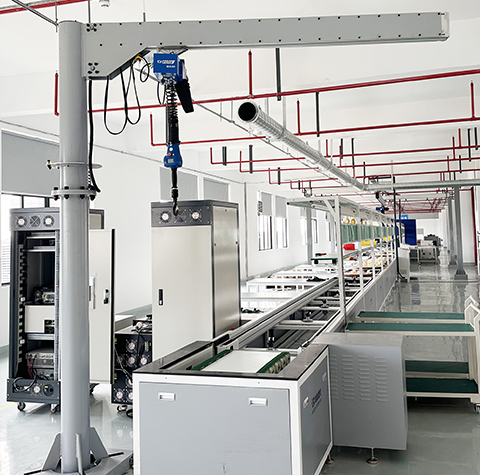Boosting Operational Efficiency and Safety with Smart Lifting Solutions
Executive Summary
A traditional assembly station manufacturer struggled with operational inefficiencies, health risks, and safety concerns associated with manual operations. By implementing intelligent lifting devices featuring advanced automation and multi-layered safety mechanisms, the company improved operational efficiency by over 30%, achieved millimeter-level positioning precision, and reduced accident rates by 90%.

The Problem
Time-Intensive Manual Processes
The traditional assembly workstations relied heavily on manual labor for height adjustments and heavy material handling, which caused significant delays. These stations completed assembly tasks 40-60% slower compared to smart equipment, owing to inefficiencies and human error.
Multi-Tasking Delays
The absence of intelligent memory functions meant switching between different work modes, such as sitting and standing, required frequent manual recalibration. This reduced effective daily working hours by over 15%.
Health and Safety Risks
- Occupational Health Hazards: Prolonged work in fixed postures increased the risk of musculoskeletal disorders (MSDs) among employees, an issue surpassing industry benchmarks by 23%.
- Higher Accident Rates: The manual handling of heavy materials led to an elevated probability of falls, collisions, and other accidents, particularly when workers were fatigued or distracted.
These challenges collectively jeopardized not only workforce safety but also the company’s productivity and compliance with stringent regulations in industries like medical device manufacturing.

The Solution
To address these issues, [Vendor Name] implemented a cutting-edge intelligent lifting solution that transformed [Client Name]’s assembly processes.
Precision and Automation
- Dynamic Adjustments: The smart lifting devices featured infinite variable speed adjustments and electronic limit functions, enabling millimeter-level precision in material handling and assembly tasks. This boosted assembly efficiency by over 40%.
- Automated Workflow Integration: By integrating with an intelligent workstation management system, workstations now supported automatic mode switching (e.g., sitting to standing), which extended effective daily operational hours by 15%. A built-in LCD display provided real-time load data and allowed quick parameter adjustments.
Enhanced Safety Features
- Multi-Layered Protection Mechanisms:
- Overload Protection: Sensors detected excessive weight and automatically stopped operations to prevent equipment damage.
- Emergency Brake: Electromagnetic brakes ensured instantaneous halts during power outages, preventing crashes or falls.
- Accident Prevention: Increased operational safety by introducing optical sensors that recognized legitimate user actions, reducing human error.
- Regulatory Compliance: The solutions adhered to the strict calibration requirements of industries like healthcare, automatically generating maintenance reports to ensure seamless quality control.
By combining advanced automation with rigorous safety design, [Vendor Name] effectively addressed [Client Name]’s core operational challenges.

Results
The implementation of intelligent lifting devices yielded significant, measurable results for [Client Name]:
- Improved Efficiency: Operational efficiency increased by over 30%, thanks to automation and precision positioning.
- Enhanced Precision: Achieved millimeter-level accuracy in material handling, reducing assembly inconsistencies.
- Significantly Safer Work Environments: Accident rates dropped by 90% due to advanced safety mechanisms like overload protection and optical sensors.
- Real-Time Monitoring Benefits: Continuous load monitoring prevented risks like overheating and overloading, safeguarding both equipment and workers.
These outcomes enabled [Client Name] to deliver better results for their clients while ensuring a safer and more productive work environment for their team.
